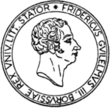Translated, „Rangaku“ denotes „Dutch Sciences„, and signifies Japanese research in the areas of Western sciences during the Edo Period (1600-1868). This comprised primarily medicine, in particular surgery, as well as geometry, weapon technology, and chronometry. Apart from Dutch scientists, who formed the only contacts with Europe after the departure of the British in 1637, there were also many German scientists, in particular on Dejima Island, Nagasaki, where they worked as physicians and as senior administrators. One of the best known of these was Philipp Franz von Siebold (1823-1829, 1859-1862), who lived for some time in Bonn.
This exhibition demonstrated adequately that Japan’s outstanding position in the scientific world of today is based on centuries of effort, and that the Japanese scientists of the Edo Period did not just copy their European colleagues but engaged in fundamental research of their own. Most of the exhibits came from the library of the University of Waseda in Tokyo.
The University of Bonn and the University of Waseda look back on more than forty fruitful years of close cooperation and partnership. This exhibition was made possible by the combined efforts of these two universities and the Rijksuniversiteit Leiden in the Netherlands.






